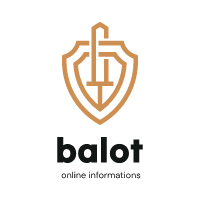Actually, ladies have fundamentally expanded their depiction in design since around 1970. No matter what this progress is, ladies actually make up around One defense behind this uniqueness is that ladies habitually leave the design field after two or three years, while men will for the most part remain with it. It is accepted that one strategy for helping close the orientation gap in design is by offering scholarships unequivocally for ladies.
Scholarships for ladies in design can assist with making everything fair and give ladies the monetary help they need to stay in the field. Scholarships can, in like manner, help ladies feel more valued in the design neighborhood in a framework organization with other female creators. In addition, scholarships can help with adjusting the costs of designing school, which can be a hindrance for specific ladies. With the help of scholarships, more ladies can enter the design field and help with the orientation hole.
1. Ladies in design face exceptional challenges with respect to orientation esteem :
In spite of the way that ladies have made basic strides in the field of design lately, they continue to face exceptional challenges concerning orientation esteem. One of the greatest hardships is the underrepresentation of women in the design field. In 2015, women made up only 14% of the design workforce in the US (U.S. Expert on Work Estimations, 2017). This is a colossal orientation dissimilarity, particularly when stood out from other STEM fields like programming and science, where ladies make up 32% and 29% of the workforce, respectively (U.S. Division of Work Estimations, 2017).
The underrepresentation of ladies in designing is a result of various factors, including the speculation that designing is a field for men, the shortfall of comfort to pursue designing callings, and orientation inclination in the field. Studies have shown that children as young as six years old are more likely to design with men than with ladies (Levallet and Scott, 2012). This speculation is conceivable and proliferated by the shortfall of good female examples in design. As per the American Relationship of College Ladies (AAUW), ladies make up just 12% of the designing labor force (AAUW, 2015). This lack of depiction can make it difficult for ladies to imagine themselves as trained professionals and may deter them from pursuing design callings.
Despite the underrepresentation of ladies in design, another test taken a gander at by ladies in the field is orientation inclination. An examination of designing students in the Brought Together Domain saw that ladies were more likely than men to experience orientation inclination as comments or children about their appearance, sexual concurrence, or limits (Levallet and Scott, 2012). Ladies in design similarly face isolation in the workplace. An examination of female architects in the US found that 45% of respondents had experienced orientation division at work, including being dismissed for headways, being paid uniquely in contrast to male accomplices, and being dealt with less than men (American Culture for Designing Schooling, 2009).
Disregarding the troubles faced by ladies 高仿Cucci in designing, there are various affiliations and undertakings endeavoring to propel orientation esteem in the field. For example, the overall population of Ladies Experts is a specialist affiliation that offers sponsorship and resources for ladies in designing. The affiliation offers scholarships and frameworks for organizations’ open entryways, and moreover, it gives mentorships and moves to ladies who are facing challenges in the field. In like manner, there are different award programs specifically for ladies in designing, which can help with adjusting the cost of schooling and making the field more accessible.
While the hardships faced by ladies in designing are basic, there are various individuals and affiliations endeavoring to propel orientation value in the field. With extended consideration regarding the issues and attempts to address the troubles, the designing field will end up being more thorough for ladies and better mirroring the assortment of the general population.
2. No matter what these troubles are, ladies have made unprecedented strides in the field of design :
No matter what the numerous troubles faced by ladies in designing, they have made unprecedented strides in the field. In the US, ladies presently obtain essentially 20% of all four-year affirmations in design. This is up from just 2% during the 1970s. Moreover, the quantity of female design students is developing at a quicker rate than the quantity of men.
There are similarly a larger number of ladies than at some other time in recent memory in designing managerial jobs. Ladies stood firm on 14% of all administrative footholds in designing firms in 2015. This is up from just 3% in 1995. Likewise, the number of ladies in design firms is developing.
Disregarding the progress that has been made, there is still a long way to go to close the orientation hole in design. Ladies are still underrepresented in the field, and they face numerous hardships. However, the example is clear: ladies are making exceptional strides in designing, and they are prepared to make fundamentally more progress in the years to come.
3. Scholarships for ladies in design can help with closing the orientation hole :
According to the Public Science Foundation, just around 20% of four-year college recipients in the US are women. This uniqueness is altogether more expressed in some specific design fields. For example, while ladies get practically 40% of programming degrees, they procure under 20% of degrees in electrical design.
There are numerous reasons why ladies are underrepresented in design. Some investigations recommend that young women are more unsure than young fellows about being encouraged to pursue designing livelihoods and that ladies who really enter designing projects are bound to leave than their male accomplices.
One technique for helping close the orientation gap in design is to give scholarships unequivocally to women. These scholarships can help with adjusting the cost of instructional expenses and various expenses associated with pursuing a design affirmation. Besides, they can convey something explicit: that designing is a field where ladies are readily gotten and regarded.
There are different affiliations that offer scholarships for women in design. The overall population of female subject matter experts, for example, offers different scholarships for both undergrad and graduate students. The American Relationship of College Ladies also offers different scholarships and associations for ladies looking to design authentications.
Giving scholarships to ladies in design is just one strategy for helping close the orientation gap in the field. Various advances that can be made include engaging young women to pursue designing jobs, further creating consistency norms for ladies in designing projects, and growing the number of ladies in managerial jobs in the designing field.
4. There are different scholarships open for ladies in design :
There are different scholarships open for ladies in design. Some are need-based, while others are merit-based. Some are for express social events of ladies, similar to minorities or ladies from unequivocal countries.
There are different affiliations that offer scholarships for women in design. A part of these affiliations are proficient relationships; for instance, the overall population of female creators Various affiliations are informative associations, similar to the “public culture of dull subject matter experts.
There are also various private affiliations that offer scholarships for women in design. A part of these affiliations are associations like General Motors. Various affiliations are foundations, similar to the Public Science Foundation.
The amount of money available through these scholarships varies for the most part. A couple of scholarships are for a few thousand bucks, while others are for the full expense of training.
Regardless of how much money is available, all of these scholarships can help with closing the orientation hole in design. By giving money-related help to ladies who are enthusiastic about pursuing a calling in design, these scholarships can help enable more ladies to enter the field. This, hence, can help with growing the number of ladies in authoritative jobs in design, which can help with shutting the orientation hole.
5. Ladies in design can affect the planet :
With respect to design, ladies have been shown to be pretty much as capable as men. In spite of this, the design field has been, for the most part, overwhelmed by men since the dawn of history. Lately, ladies have started to gain appreciation for their abilities in this male-ruled field.
Disregarding the progress that has been made, the orientation hole in design is still outstandingly clear. Ladies make up under 20% of design students and only 11% of practicing engineers. This uniqueness is clear in various locales of the world, not simply in developed countries.
There are numerous legitimizations for why there is a colossal orientation hole in design. One clarification is that young women are often not encouraged to seek a deep-rooted vocation in design. They may be dissuaded by the speculation that design is a male-dominated field and that they will fail. Another clarification is that young women regularly don’t move toward comparable resources as young fellows concerning STEM guidance.







